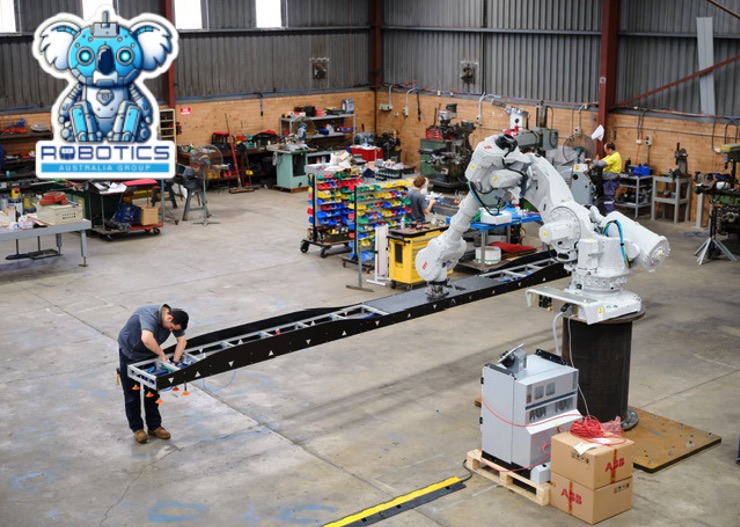Iván Hernández Dalas: The Robotics Australia Group is building a sustainable robotics industry in Australia

The group’s board, as of November 2023, from left to right, back row: Dr. Sue Keay (chair), Brenton Cunningham, Christian Ruberg, Tim Bradley, Dr. Nathan Kirchner; front row: Dr. John Vial, Tamanna Monem, Kathie van Vugt, Nicci Rossouw, Angus Robinson. Source: Robotics Australia Group
The robotics industry in Australia stands at the precipice of a transformative era, driven by a shared vision of sustainability and innovation. At the forefront of this movement is the Robotics Australia Group, an organization committed to nurturing a comprehensive robotics ecosystem.
From companies developing cutting-edge robotic technologies to educational institutions cultivating future talent, the group supports all facets of this burgeoning industry. Its mission aligns with the broader national objectives, as recently underscored by the Australian government’s National Robotics Strategy.
National Robotics Strategy points the way to innovation
Ed Husic, MP and the minister for industry and science, recently announced the National Robotics Strategy. It marks a significant milestone for the Australian robotics sector, said the Robotics Australia Group.
“The strategy not only highlights the current achievements, but also lays a robust foundation for future developments,” stated Dr. Nathan Kirchner, founding director of the group. “It is a call to industry stakeholders to collaborate and drive forward this ambitious vision.”
This strategy aims to accelerate the adoption of robotics and automation technologies across various industries, a move that is integral to the broader vision of a “Future Made in Australia.” The strategy is imbued with optimism, promising substantial advancements and positioning Australia as a leader in robotics innovation on the global stage.
Minister Husic’s declaration signaled the Australian government’s commitment to harnessing the potential of robotics to address the country’s unique challenges.

Some examples of the world-leading field robotics delivered by group members. Source: Robotics Australia Group
Minister recognizes Robotics Australia contributions
The group said its contributions have been instrumental in shaping the current landscape of the Australian robotics industry. During his announcement of the National Robotics Strategy, Husic acknowledged its sustained efforts, active participation in the development of the strategy, the contributions made through publishing Australian Robotic Roadmaps, and continued advocacy.
“We have deep pockets of robotics excellence in Australia, we will become greatly more competitive on the world stage by joining them together,” said Kirchner. “The National Robotics Strategy is a significant step towards that. I am very proud that the underpinning groundwork of the Robotics Australia Group has been recognized.”
The organization has worked to support various stakeholders within the ecosystem. By fostering collaborations, facilitating research and development, and promoting educational initiatives, it said it has created a fertile ground for the robotics industry to thrive. The group added that it is working to ensure that the benefits of robotics and automation are accessible to a broad range of industries and applications.
Robotics provides Australia a strategic advantage
”We have overcome the core challenges of a very large land and sparsely populated country in order to deliver a number of notable outcomes,” said Kirchner. “Nevertheless, through doing so, we have developed a significant strategic advantage in the field hard robotics”
Australia’s geographical and demographic characteristics make it an ideal candidate for pioneering advanced robotics, asserted the group. The country’s vast landmass, coupled with a relatively small and dispersed population, creates a unique set of challenges that robotics can effectively address. Remote areas often require complex tasks to be completed, and robots can significantly enhance efficiency and safety in these environments.
Moreover, Australia boasts a remarkable depth of local talent and expertise in both hardware and software aspects of robotics, said the organization.
Industries such as mining, ports, transport and logistics, construction, agriculture, and defense have long benefited from Australia’s field-hardened robotics intellectual property, the group added. This robust foundation of expertise and innovation positions Australia to leverage robotics in solving critical problems and improving operational efficiencies across these sectors, it said.

One of the cutting-edge manufacturing installations developed by Applied Robotics, a group member. Source: Robotics Australia Group
Sector celebrates wins and looks ahead
“The announcement of the National Robotics Strategy is an exciting and commendable first step,” said the group. “However, it is essential to recognize that this is merely the beginning. The path to a fully realized, sustainable robotics industry in Australia requires continued effort and focus. While we celebrate this significant achievement, it is crucial to remain vigilant and committed to solidifying these initial steps to ensure long-term progress.”
The future of robotics in Australia holds immense potential, it noted. By using the momentum generated by the National Robotics Strategy, the nation’s industry can aspire to new heights on the global stage. This requires a concerted effort from all stakeholders to foster an environment conducive to innovation, collaboration, and international exchange, the group said.
“With the National Robotics Strategy as a guiding framework, Australia is poised to become a global leader in robotics and automation,” said Kirchner.
This vision can only be realized through collective effort and a strategic approach to international collaboration. By establishing a bi-directional conduit for deep commercial exchange in robotics and AI, Australia can position itself at the forefront of technological innovation.
The future success of the robotics industry hinges on the ability to integrate advanced technologies into practical applications that address real-world challenges. The group said that it and other industry stakeholders must continue to advocate for policies and initiatives that support research, development, and the commercialization of robotics technologies.
“The commitment of the Robotics Australia Group to building a sustainable robotics industry in Australia is both inspiring and crucial,” Kirchner said. “Their efforts, coupled with the strategic direction provided by the National Robotics Strategy, pave the way for a future where robotics and automation play a central role in addressing the nation’s unique challenges. By celebrating current achievements and maintaining a steadfast focus on future goals, Australia can achieve remarkable advancements in the robotics industry.”
In this journey, it is essential to remain proactive, collaborative, and visionary. With a collective effort, the vision of a “Future Made in Australia” powered by advanced robotics is not just a dream, but also an imminent reality. The group is currently spearheading the production of the third edition of the Robotics Roadmap for Australia, scheduled for release in 2025.
“Together, we can propel Australia to new heights of innovation and global leadership in the robotics sector,” said the group.
About the author
 Dr. Nathan G.E. Kirchner is a serial startup founder and advisor, corporate ventures advisor, professor, and founding director of a peak body. He has been recognized as one of “Australia’s Most Innovative” by Engineers Australia and one of the “Top Ten Young Scientists” by Popular Science magazine.
Dr. Nathan G.E. Kirchner is a serial startup founder and advisor, corporate ventures advisor, professor, and founding director of a peak body. He has been recognized as one of “Australia’s Most Innovative” by Engineers Australia and one of the “Top Ten Young Scientists” by Popular Science magazine.
With over 25 years in industry and academia, Kirchner has founded and led several robotics-AI startups, and he serves as a founding director of the Robotics Australia Group. Kirchner is also a venture partner at a leading hardware-first venture capital firm.
He has held prestigious positions such as head of robotics at a major construction company and at Stanford University, the University of Technology Sydney, and Ohio State University.
The post The Robotics Australia Group is building a sustainable robotics industry in Australia appeared first on The Robot Report.
View Source